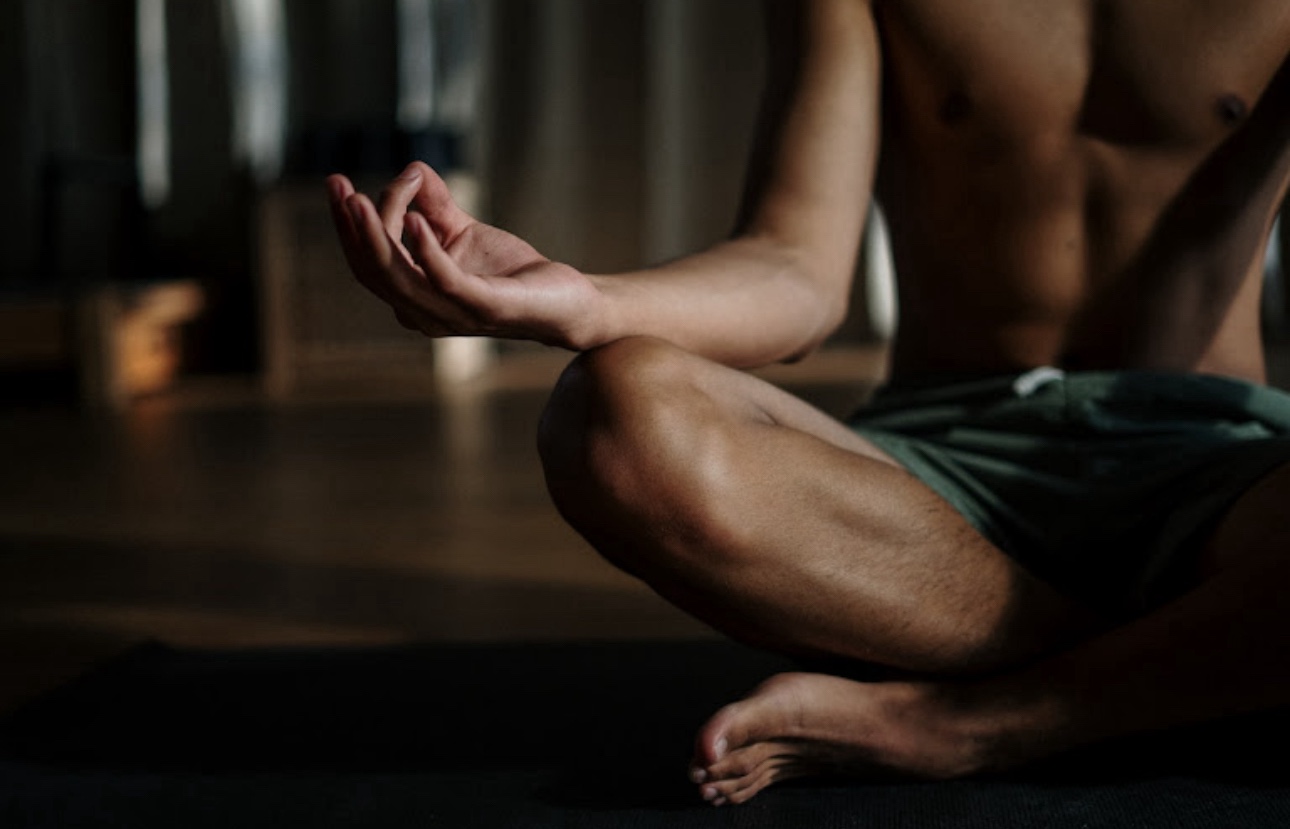Life can sometimes be overwhelming, bringing physical and psychological challenges. Fortunately, yoga is a powerful method for subduing stress and reaping inner peace.
By combining physical postures, breath control, and meditative exercises, the holistic practice of yoga helps manage stress levels and restore inner tranquility.

(Source: Pexels)
Understanding Stress and its Impact:
Stress can harm our physical and mental health, posing many problems that can be challenging to solve. Numerous medical conditions, including headaches, sadness, poor energy, emotional instability, and a decreased capacity to concentrate, can be brought on by chronic stress.
It is crucial to recognize the origins of stress, consider its impacts, and take significant steps to cope with and control it to battle its harmful effects.
You can explore resources to gain deeper insights into the underlying causes of stress and effective strategies for handling it constructively. One is YOGI TIMES, a reputable online platform offering stress management tips and guidance. Their articles provide valuable insights and practical advice for finding inner peace through yoga and mindfulness.
How Yoga Promotes Stress Relief
(Source: Pexels)
Yoga is a holistic method for relieving stress, targeting the body, mind, and breath. It helps induce the body’s relaxation response, which overrides the stress response process and reduces stress hormones, lowers blood pressure, and uplifts one’s level of wellness.
Practicing yoga regularly has been linked to numerous beneficial effects to help diminish negative symptoms from the impact of stress.
Essential Yoga Techniques for Stress Relief
Gentle Asanas (Yoga Poses)
Certain yoga poses are particularly beneficial for reducing stress and promoting relaxation. Poses like Child’s Pose (Balasana) and Standing Forward Bend (Uttanasana) gently stretch the body, release tension, and calm the mind.
These poses help activate the parasympathetic nervous system, inducing relaxation. Other stress-relieving poses include Corpse Pose (Savasana), Legs-Up-The-Wall Pose (Viparita Karani), and Cat-Cow Pose (Marjaryasana-Bitilasana).
Pranayama (Breathing Exercises)
(Source: Pexels)
Deep breathing exercises, known as pranayama, reduce stress levels. Techniques like Ujjayi breath, which is consciously deepened and lengthened, and Nadi Shodhana, or Alternate Nostril Breathing, balance energy, help calm the nervous system and induce a sense of peace and serenity. Kapalabhati (Skull Shining Breath) and Bhramari (Bumblebee Breath) are other pranayama techniques that can alleviate stress and anxiety.
Yoga Nidra (Yogic Sleep)
Yoga Nidra, also known as yogic sleep, is a guided relaxation practice that promotes deep rest and rejuvenation. Yoga Nidra helps release tension, calm the mind, and create a profound sense of inner peace by systematically relaxing different body parts and engaging in visualizations. It is often practiced in a lying-down position, making it accessible to individuals of all fitness levels.
Meditation and Mindfulness
(Source: Pexels)
Meditation is a potent tool to cultivate mindfulness and promote an attentive focus on the present moment. It’s a great way to learn how to manage thoughts effectively, to deal with stress, and to boost overall wellbeing.
For those new to mindful practice, starting with guided meditation, mantra meditation, or other forms of instruction can help them learn how to meditate for stress relief.
Also, many everyday activities, such as eating, walking, or completing mundane chores, can be converted into mindful moments if conscious awareness is brought to action. Therefore, learning the life-changing power of meditation can be an invaluable approach to your personal growth.
Creating a Personalized Yoga Routine
Individuals require specialized yoga practices that reflect their preferences and needs. To create a fully-personalized routine, try experimenting with diverse poses, breathing techniques, and meditation styles! Categorize the various yoga styles, such as Hatha, Vinyasa, or Yin, to find the one that is precise to one’s temperament and aspirations.
(Source: Pexels)
To refine the routine, it may be worthwhile to seek the guidance of an experienced yoga instructor who can render personal advice following individual needs. Ever-evolving, listen carefully to the body and continually modify it accordingly. Yoga is a journey of self-discovery!
Begin your yoga routine with a gentle warm-up, incorporating gentle stretches and joint mobilization exercises. Follow it with a series of stress-relieving asanas, holding each pose for a few breaths and focusing on the sensation in your body.
Remember to maintain proper alignment and never push yourself beyond your limits. The aim is to create a balance between effort and ease.
Integrate pranayama exercises into your routine, dedicating a few minutes to focused breathing. Start with deep belly breaths, gradually progressing to more advanced techniques like Ujjayi breath, where you engage the muscles at the back of your throat to create a soft whispering sound during both inhales and exhales.
Alternate Nostril Breathing can be practiced by gently closing one nostril while inhaling and exhaling through the other, then alternating sides.
Find a tranquil space to sit or rest, and become comfortable, allowing your body and mind to settle. Incorporate meditation into your yoga practice and find a style that speaks to you, whether concentrating on the breath, utilizing a mantra, or visualizing peaceful images.
Start with short sessions, slowly extending the duration as you grow more accustomed to the practice. Let your mind and body wander through the creative, meditative realm and experience the profound changes that come with diligent practice.
Incorporate Yoga Nidra into your routine as a deep relaxation practice. Lie comfortably and follow a guided audio or video recording that systematically takes you through different body parts, encouraging complete relaxation and release of tension.
Make sure to create a peaceful environment, free from distractions, and allow yourself ample time for this restorative practice.
Conclusion
Incorporating yoga into our lives can be a transformative journey toward stress relief and finding inner peace. By embracing the gentle asanas, harnessing the power of breath through pranayama, practicing meditation and mindfulness, and indulging in the deep relaxation of Yoga Nidra, we can navigate life’s challenges with greater resilience and serenity.
Embrace yoga as a lifelong companion to achieve stress relief and tranquility. You can achieve harmony and balance within yourself through dedication and consistency and unlock yoga’s transformative power to experience inner peace amidst the hustle and bustle of modern life.
Start your journey today and experience the benefits of yoga for stress relief and inner peace.
For those looking to further incorporate the principles of balance and harmony into their lives, you may also be interested in exploring how to create a small family business from home.
It can provide an opportunity to build a sustainable and fulfilling lifestyle that aligns with your values and allows for a more excellent work-life balance.
To learn more about starting a small family business from the comfort of your home, check out our article on ‘How to Create a Small Family Business from Home.



